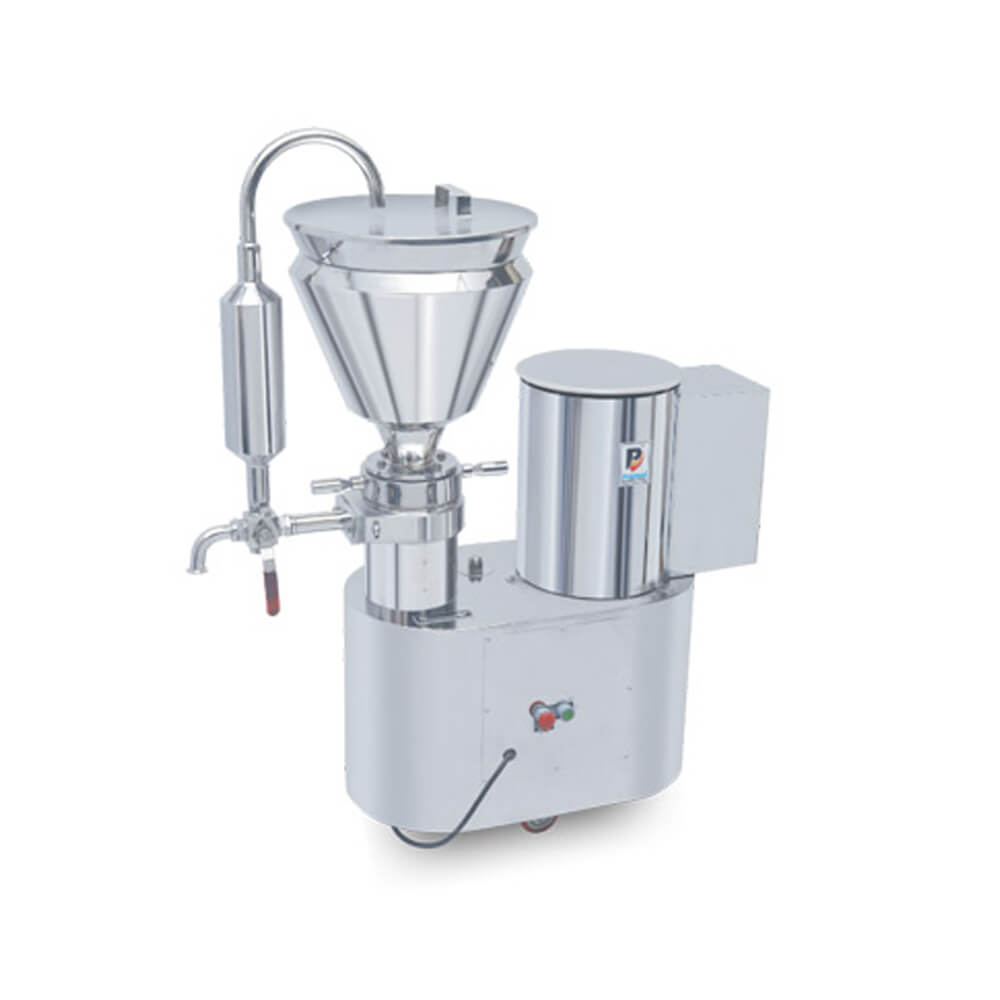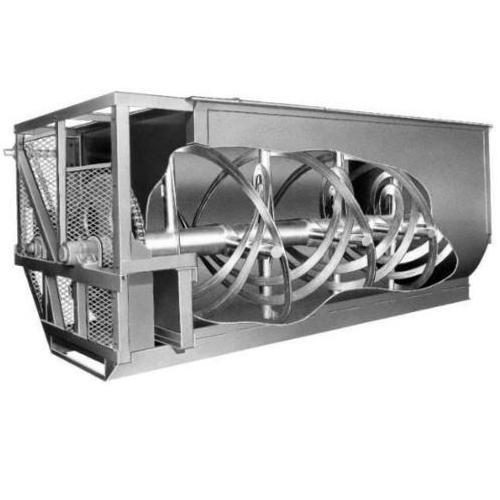A colloid mill reduces the particle size of a solid suspended in a liquid or the droplet size of a liquid suspended in another liquid. This is accomplished by subjecting the process liquid to high levels of hydraulic shear. It’s widely used to make suspensions and emulsions more stable. In the pharmaceutical, cosmetics, suspensions, and emulsion industries, the colloid mill is used for superfine grinding, homogenising, emulsifying, dispersing, combining, and removing liquids, ointments, and highly viscous materials.
A colloid mill is a rotor-stator mixer that is commonly used to make emulsions and dispersions. It can also be used to decrease the particle size of suspended solids. A high-speed rotor within the colloid mill moves the fluid through small holes in a stationary stator, causing intense mechanical shear. The user can monitor the degree of shear by adjusting the size of these holes or gaps. The smaller the resulting particle size, the higher the shear.
The mixing action imparted to the process fluid in a colloid mill is based on hydraulic shear generated between two cone-shaped discs, one of which is stationary while the other rotates at a high speed. Tip speeds of 4,000 to 7,000 feet per minute are common. The clearance between the two discs is adjusted to monitor the shear level and flow rate. A cooling jacket around the stator helps to keep the temperature down. Effective mixing in many colloid mill applications requires sufficient particle or droplet size reduction without overheating the product or damaging the raw materials’ integrity.
Colloid mills are widely used in the pharmaceutical, food, and chemical industries. It’s ideal for producing small to medium batches of products, such as toothpaste and peanut butter.
When fitted with a rough-surfaced rotor and stator, colloid mills operate well with highly viscous goods, and some can even be used to grind fibrous materials. The main drawbacks of a colloid mill are that it is not ideal for continuous use, that it takes a lot of energy to work, and that product contamination is a possibility.
The homogenizer works on the theory that after the material is sheared, compressed, and folded by the stirring blade, it is combined and flowed down to the homogenizer at the bottom. The material generated by a high-speed rotation of the homogenizer rotor and stator generates a strong force. The material is rapidly broken into particles through shear, impact, turbulence, and a number of other processes, and since the emulsification pot is in a vacuum state, the material does not create bubbles during the mixing phase. Homogenizer is a device that uses high-pressure, high-speed shear to combine oil, water, emulsifier, and other liquids into a homogeneous oil-water phase or water-oil phase of small particles. When using the equipment for ice cream manufacturing, flavour production, chemical and other liquid oil, water, emulsifiers, and other ingredients.
From a theory standpoint, they all have a grinding, grinding, and mixing effect, but the emulsification effect of the colloid mill is weaker than that of the homogenizer, so the colloid mill is typically used for grinding before homogenization or for more processed solid materials. The structure of a colloid mill is basic, and it has a small footprint compared to a wide area of a homogenizer. The cost of a homogenizer system is therefore much higher than that of a colloid mill. A colloid mill is better for food production, whereas a homogenizer is better for chemical and cosmetic processing.





